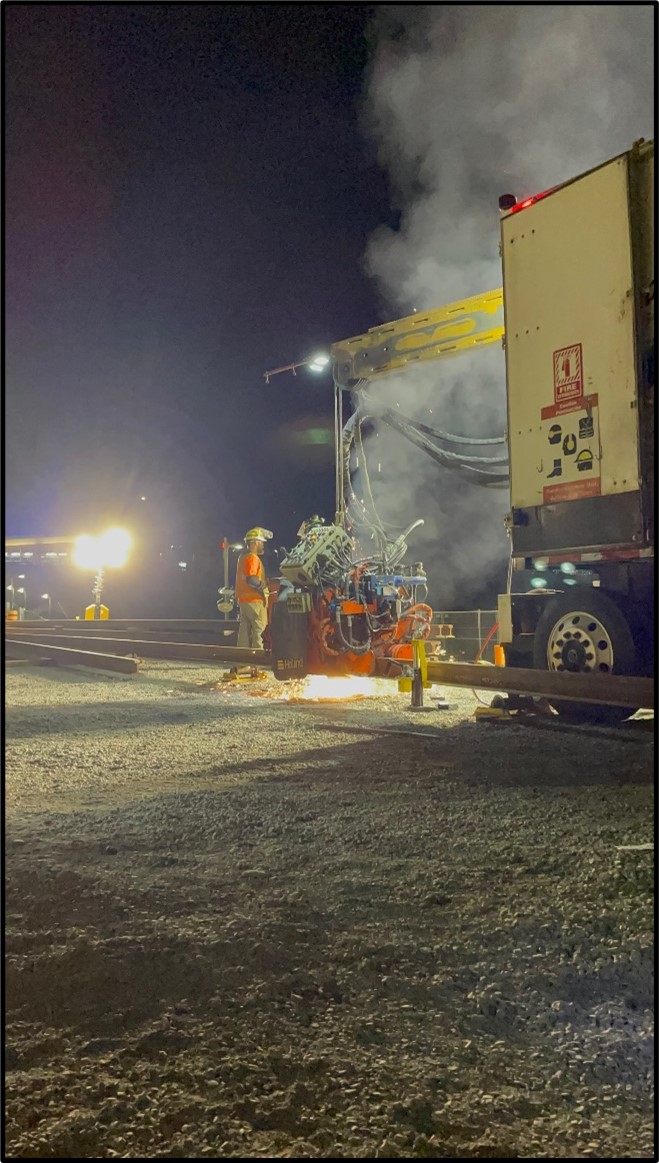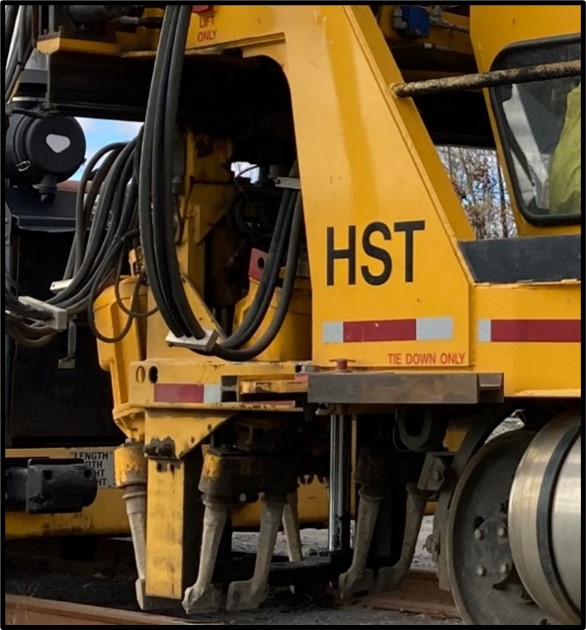Rail Installation on the O-Train South Extension

A Stadler FLIRT arrives at Limebank Station in Riverside South (April 2023).
Spring is in the air and construction is moving ahead full speed on all three Stage 2 O-Train Extensions.
The O-Train South extension is getting closer to completion each day. We recently celebrated the Stadler FLIRT’s first journey to Riverside South in late April. As trackwork continues to progress, we’re excited to see the FLIRT travel further north.
Before this can happen, let’s check in on how rail installation is progressing on the O-Train South Extension.
Rail installation approximately 95% complete
Rail installation on the O-Train South Extension is tracking towards completion, with almost all 36.7 kilometres of rail installed.
To date, approximately 34 kilometres – which equals approximately 95% of all track –has been laid.
Crews are currently installing rail in the following areas:
- Ellwood Diamond elevated guideway
- Hunt Club rail bridge
- Airport elevated guideway
How is rail installed?
Between Bayview and Greenboro stations, crews have replaced the old track. New track components have been installed such as steel rails and ties. The rocks found beneath the tracks, also known as the ballast, have also been replaced.

Dows Lake Tunnel (March 2023).
On the new sections, rail installation can be divided into two stages: civil works and track works.
While some tasks can be completed at the same time, civil works typically happen first. Civil works include the activities required to build the subgrade of the tracks, or simply put, the base for the rail. Civil works can include environmental studies, excavation, and utility work.
Across the O-Train South Extension, this prep work has been completed, meaning that the big push now is to install a new track.
Once the rails are in place, a method called flash-butt welding joins two pieces of rail together. The area around the weld is then grinded down to form a smooth, continuous surface.

Flash-butt welding to connect the pieces of rail together.
The final step in the process involves fastening the rail to the ties below. This can take place in two different ways, depending on the location where the track is being installed.
Once the rail has been placed, welded, and fastened to the ties, the rail must be “destressed”. This process allows the rail to handle extreme temperatures to help prevent bending or kinking. Ballast is then poured on top of the ties, which must be compacted or “tamped” to the correct alignment.


(Left: tamping machine; Right: close-up of the tamping machine’s tools).
The second method is known as Direct Fixation Track (DFT). This process does not require ballast. Instead, the rail is fastened directly onto concrete slabs instead of ties. DFT is being used on bridges and elevated sections of track on the O-Train South Extension.

A railroad spiking machine rides the rails and spikes the tie plates and ties together.
With the upcoming completion of track, the new Stadler FLIRT trains will begin testing and commissioning on the entire line. Meeting these milestones gets customers one step closer to riding Lines 2 and 4!
Stay Connected!
Stay up to date on Stage 2 LRT progress by signing up for the Stage 2 enewsletters and following @Stage2Etape2 on Instagram.

